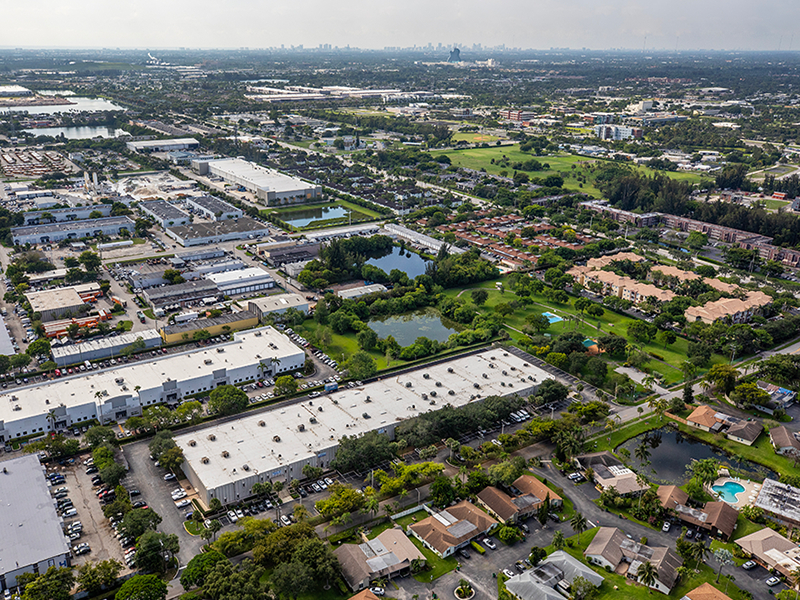What Blackstone, Inland Moves Mean for Non-Traded REITs
Investors will likely benefit from more efficient distribution channels and attractive fee structures, contends RealtyMogul’s Jilliene Helman.
By Jilliene Helman, CEO, RealtyMogul
I’m always excited by stories highlighting the powerful ways that internal and external market forces can transform previously untouchable industries. A few weeks ago, Inland Real Estate Investment Corp., a prominent sponsor of non-traded REITs, announced that it would be eliminating all real estate-related transaction fees for its current and future non-traded REITs–a move that could potentially shift millions of dollars from Inland’s revenue line right into investors’ pockets.
Just one day later, Blackstone announced it would be launching its own (first) non-traded REIT, seeking to raise $5 billion from individual investors. Adding intrigue to the news is that Blackstone plans to forego the more traditional distribution channels typically used in the non-traded REIT industry, such as independent broker-dealers, in favor of alternative, less popular means like Registered Investment Advisors (RIAs) and wirehouse platforms.
All this comes at a time when fundraising for non-traded REITs is actually plummeting as regulatory pressure, new rules, increased transparency requirements and recent scandals are hurting sponsors across the board.
So what am I taking away from this news? Here are a few thoughts:
Efficient Distribution is Key
One of the main reasons non-traded REITs got a bad rap is the high upfront fees and selling commissions they charge—an average of 13.2 percent. This is a direct result of how they have historically been distributed, through independent broker-dealers (IBDs). Sponsors paid these IBDs a lot of money to sell their REITs. Oh wait a minute, they didn’t; Investors did.
High-selling commissions have the obvious impact of immediately reducing one’s investment amount: if you invest $100 and only $87 is invested while the rest is paid as commissions, your real investment of $87 needs to yield a 15 percent return just to get you back to $100!
They also create misalignment of incentives. If an IBD gets a fat check to sell you something, they may try to sell it to you even if it does not meet your needs. Finally, IBDs have limited reach, and limited reach means inefficient matching on capital demand and supply.
Inland’s move doesn’t address any of these issues but feels like a quick fix to stave off increasing market pressure. Blackstone’s move is an interesting one and does try to address some of these issues, but without its own distribution capabilities, it doesn’t seem like Blackstone can truly go direct to consumer and solve this distribution problem (although that remains to be seen).
Change Must be Holistic
Eliminating transaction fees is an obvious plus for investors, but any major change to the real estate industry has to be more holistic and consider changes in technology, use of data, customer service and end-to-end user experience.
Take Uber. When the on-demand car service entered the New York market, the Yellow Cab industry, which had long operated with virtually no competition, was forced to catch up or risk extinction. While Yellow Cab companies have stepped up their game, their piecemeal approach may prove too little too late. Cab companies tried to win back customers by providing a better in-ride experience, but they were still missing out on the pre- and post-ride convenience Uber was capitalizing on. More recently, with a relaunched and enhanced version of the Curb app, the cost of operating a cab in New York City is plummeting, and drivers are seeing better employment terms than ever before. Will it be enough? Only time will tell. But what we can tell is that as product expectations continue to change, our job is to create a seamless experience for our investors from beginning to end.
Regulation Drives Innovation
Regulation is typically seen as a roadblock to innovation or progress, but in this case, it may have the opposite effect. As new rules go into effect and regulators continue to scrutinize non-traded REITs, big players—like Inland and Blackstone—and more disruptive newcomers are trying to reshape products and deliver them more effectively. The need for the product is there, and regulators are effectively pushing everybody to rethink its shape and form.
Technology Adds Value
Last but not least, these bold moves by industry behemoths signal an opportunity in the market to change the way people invest in non-traded REITs, and firms that look to technology for solutions will best fulfill that opportunity. While Inland and Blackstone haven’t gone online (yet), they’ve no doubt observed smaller, more agile companies going this route and are trying to adapt to better serve investors.
Financial products distributed exclusively online have new infrastructures that cut out the high-fee middle men like broker dealers. What E*TRADE and Scottrade have done for the stock market, these online platforms are doing for the traditionally slow-to-innovate real estate investment market. Technology-enabled innovation is not only bringing greater value to investors by driving down costs, but also by building Know Your Customer and other compliance measures directly into the product.
It’s good news for investors…
Investors are set to benefit from all the industry changes as it continues to move to more effective distribution channels and simpler fee structures.
I’m confident that funds that go direct to the consumer, charge lower fees, leverage technology and data, pair capital supply and demand more efficiently, and focus on user experience are poised to be the next generation of non-traded REITs.
… and finally it’s good news for the industry…
The news from Inland and Blackstone is a good sign for the industry. Whether this is a reaction to new regulation or online disruptors isn’t the point. The point is that real estate investing hasn’t seen much change in the last few decades, so we’re long overdue for a shakeup.








You must be logged in to post a comment.